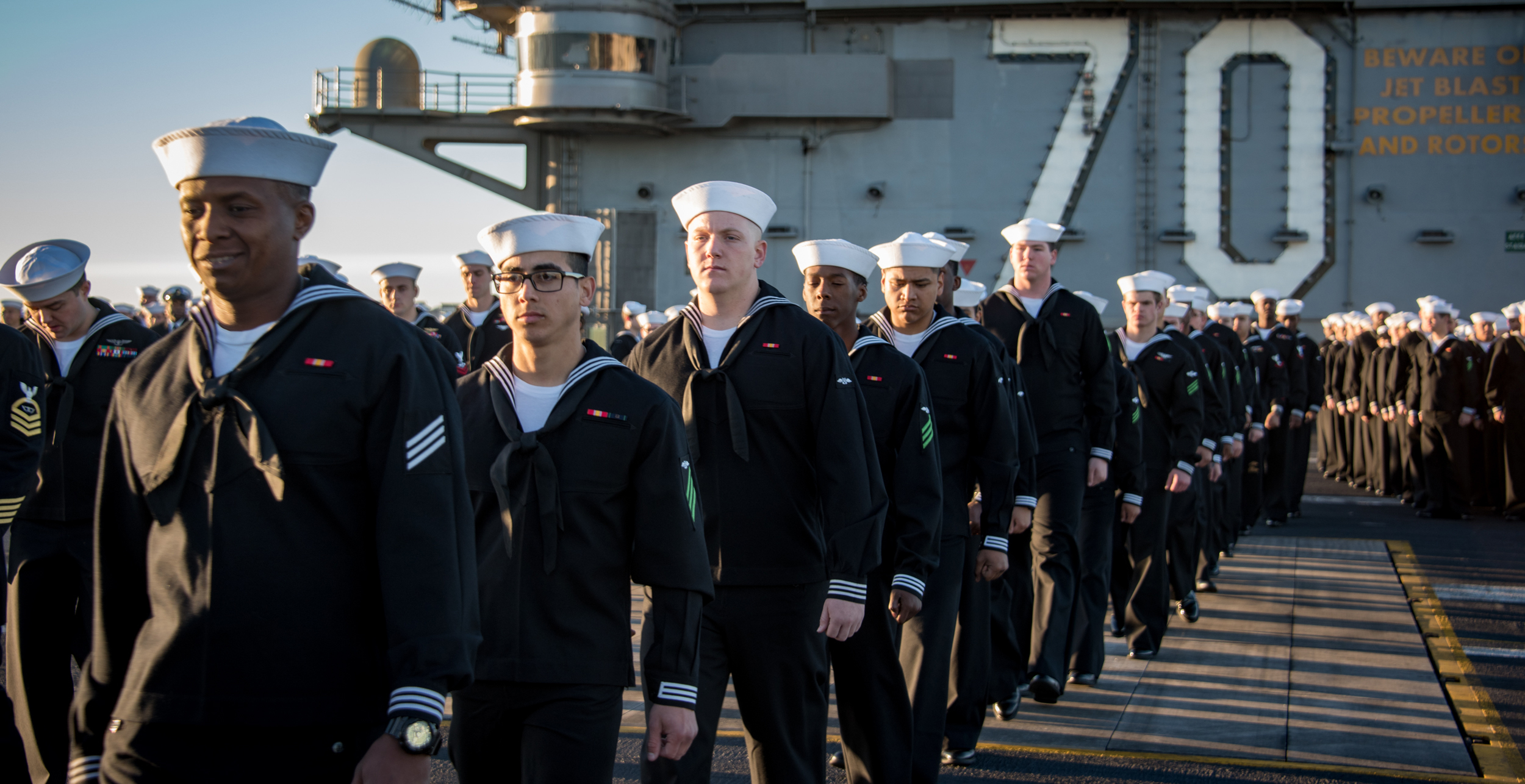By: John Grady
 U.S. Navy Sailors aboard Nimitz-class aircraft carrier USS Carl Vinson (CVN-70) man the rails as the ship departs its homeport of San Diego on Jan. 5, 2017. US Navy Photo
U.S. Navy Sailors aboard Nimitz-class aircraft carrier USS Carl Vinson (CVN-70) man the rails as the ship departs its homeport of San Diego on Jan. 5, 2017. US Navy Photo
The Navy is asking Congress for more flexibility to recruit rewards for talent and promote to higher rank its officers to better compete in the career marketplace, the service’s personnel chief said Wednesday.
Testifying before the Senate Armed Services personnel subcommittee, Vice Adm. Robert Burke said one example would be giving the Navy leeway in lateral selection — bringing in outside officers with skills in fields such as cyber, robotics and artificial intelligence at ranks higher than ensign or lieutenant and being able to keep them longer in uniform than current policies or authorities now allow.
Chief of Naval Personnel (CNP) Vice Adm. Robert Burke emphasizes the importance of the retention program during an all-hands call at the Naval Base Kitsap Bremerton, Wash. on June 17, 2017. US Navy Photo
Using cyberwarfare engineering as an example, Burke said, “Those folks are in high demand” in other sectors of the federal government and private industry. They can command salaries in the $90,000 range outside the Navy, more than twice what a junior officer would make, putting the service at a disadvantage in attracting them.
“The ‘Up and Out Model’ would still cover the bulk” of the officer corps. A number of the considerations Burke mentioned also would not lead to command positions.
Other alterations, he laid on the table were an option of “up and stay longer” in certain fields based on technical skills and also “bring back and bring in” those who separated but want to serve again. Later in answer to a question on flexibility, he said there were implications for existing policies covering age restrictions for service if these ideas were adopted.
Even with the Navy’s Sailor 2025 program to modernize the personnel system in place, many view the service as having inflexible personnel policies when it comes to their next assignment and overall career.
To counter that impression, Burke said the Navy is in its sixth pilot of the “Marketplace Detailing, [operating] like LinkedIn” and is expected to roll out in August.
The marketplace gives sailors the opportunity to provide “an enhancement to their service records” beyond listing their schools and past assignments. It “allows them to communicate directly with the command” about the special skills they have.
The marketplace also “allows commanders to see the entire field” of sailors interested in the assignment and not just see the choices selected for them.
Burke said it “increases confidence” in the personnel system among sailors.
“One size does not fit all” and changes could “be tailored for discretionary use” in individual’s cases.
While saying recruiting and retention remain strong, Lt. Gen. Michael Rocco, Marine Corps personnel chief, like his compatriots on the panel, said he was looking for flexibility “so we can reward those well-performing officers” above their peers at the same rank.
The chiefs shied away from using the phrase “merit pay” to describe this possibility. “Merit pay” has been a contentious issue inside the federal civilian workforce for years.
In terms of “up and out” for colonels at 30 years of service, he said, “We need to pursue that a little bit further ” in discussions with Congress about possible legislative changes.
“I think we’re at the point [in the Navy] where we need to change some authorities,” Burke said.

No comments:
Post a Comment